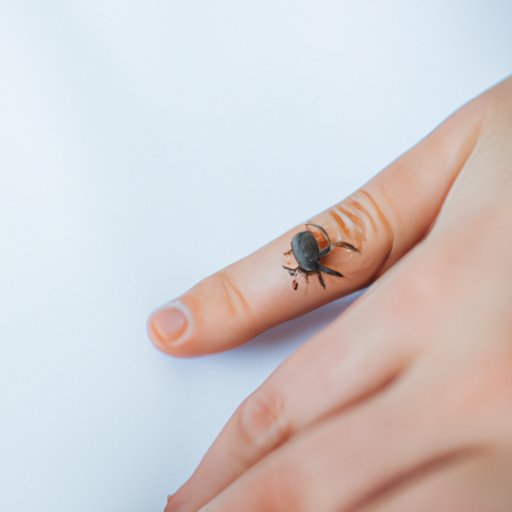
Where Does Lyme Disease Come From: The History and Biology of the Disease
Lyme disease is an infectious disease caused by the bacterium Borrelia burgdorferi, which is transmitted to humans through the bite of infected blacklegged ticks. This disease affects an estimated 300,000 Americans every year, making it one of the most common vector-borne diseases in the country. Understanding the history and biology of Lyme disease is critical in developing effective prevention and treatment strategies. In this article, we will explore the history of how the disease has been discovered, how it spreads, and how it impacts individuals and society at large.
History of Lyme Disease
Lyme disease was initially recognized in the mid-1970s in a group of children in Lyme, Connecticut. The symptoms included a rash, fever, and joint pain, and it was recognized as a distinct clinical entity in 1977.
However, evidence suggests that the bacterium that causes Lyme disease has been present in Europe for thousands of years. The first recorded instances of the disease date back to the early 20th century in Europe. In the early 1970s, researchers in Scandinavia discovered a spirochete bacterium-like organism in the mid-gut of the Ixodes ricinus tick. This organism was later identified as Borrelia burgdorferi, the causative agent of Lyme disease.
There are several hypotheses about how the disease migrated to the United States. Some scientists believe that Lyme disease was brought over to the US by European settlers who carried infected ticks with them. Others believe that Lyme disease originated in the US and was merely undiscovered before the 1970s.
Biological Mechanism of Lyme Disease
Lyme disease is mainly carried and spread by blacklegged ticks (also known as deer ticks) that are infected with B. burgdorferi. These ticks can transmit the disease to humans and animals alike. Ticks typically feed on small mammals, such as rodents and deer, which can be reservoirs for the disease.
When an infected tick bites a human, it transfers the bacteria into the bloodstream. The bacteria then begins to reproduce and multiply, leading to the onset of the disease. Symptoms commonly include fever, fatigue, headache, and a characteristic skin rash called erythema migrans.
Regions of the US Where Lyme Disease is Most Prevalent
Lyme disease is most prevalent in the northeastern and upper Midwestern regions of the United States, where there are large concentrations of blacklegged ticks. Environmental factors such as climate, vegetation, and geography greatly influence the prevalence of ticks. Regions with high humidity, high precipitation, and mild temperatures are more favorable for tick habitats.
Certain plant species, such as brushy vegetation and leaf litter, also attract ticks. White-tailed deer are a common host for adult blacklegged ticks, and their presence in an area often increases the risk of Lyme disease infection.
The spread of Lyme disease has also been linked to climate change. With warming temperatures, blacklegged ticks are expanding their habitats into new regions of the US. Warmer weather also allows ticks to increase their activity, contributing to a higher incidence of the disease.
Social and Economic Impacts of Lyme Disease
Lyme disease can have significant social and economic impacts. The disease can cause long-term health issues and chronic pain for those who contract it. Financial burdens can also arise from costs associated with diagnosis, treatment, and prevention.
In addition, the disease can also have an impact on society. With the prevalence of Lyme disease increasing across the US, it can have a negative effect on outdoor activities such as hiking, camping, and gardening. Measures to control tick populations, such as insecticide spraying, also have environmental consequences.
Preventing Lyme Disease
The most effective way to prevent Lyme disease is to avoid exposure to ticks. This can be achieved through several measures, such as wearing protective clothing, using insect repellents, and performing thorough tick checks after spending time outdoors.
Medical professionals can also give expert advice on the best ways to prevent the disease. They may recommend seasonal prophylactic antibiotics for individuals at high risk of exposure. Environmental measures such as habitat modification and reducing deer populations can also be effective in preventing Lyme disease.

Controversies Surrounding Diagnosis and Treatment
While there are established diagnostic tests and treatment guidelines for Lyme disease, there is still controversy surrounding the disease. The accuracy of diagnostic tests has been called into question, with some patients receiving false-negative results. There is also debate over the best course of treatment for the disease, with varying opinions about the efficacy and duration of antibiotic therapy.
Conclusion
In conclusion, Lyme disease is a significant and complicated disease that has evolved over time. Understanding the biology and history of the disease is critical in developing effective prevention and treatment strategies. The social and economic impacts of the disease make it an issue that society should address seriously. By taking preventative measures and seeking expert advice, individuals can reduce their risk of Lyme disease infection.




